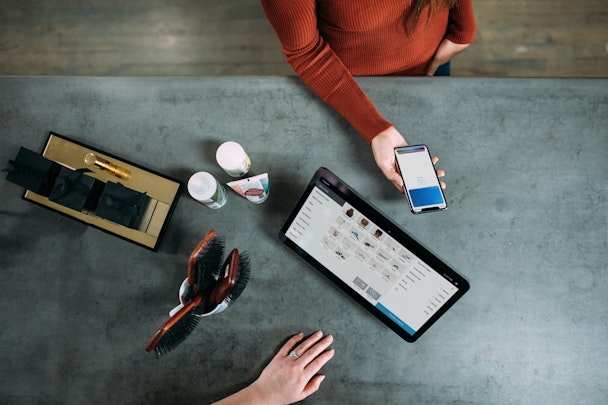Mobile commerce is set to supercharge AR: here’s what you need to know
Augmented reality has taken a few major leaps in recent years, and e-commerce functions look set to provide it with a breakthrough role. For our deep dive into everything mobile, Adam Mingay, client partnerships manager at Unit9, picks the tech to look out for in the near future.

The evolution of mobile AR over recent years, from social gimmick to cornerstone of innovation, has been fascinating to watch. With the recent and rumored advancements in hardware and software, it really does feel like we’re now standing on the precipice of a new dawn of impactful AR. And the way it’s used in commerce is at the forefront of this charge into the future. With cutting-edge tools at their fingertips, consumers are discovering a tailored yet accessible approach to online and in-person shopping that’s set to transform the way they browse, purchase and interact with brands.
Mobile tech innovations announced last year, such as the Lidar sensor integration, are now becoming more widely adopted, and we’re seeing real-life use cases emerge from brands including Ikea. Integrated into the iPhone 12 Pro, Lidar technology has elevated home shopping into something that does what the in-store experience cannot – allowing consumers to try out AR items in their own space before they commit to purchasing, while moving around the item to visualize it from all angles. Checking whether that new super king will fit in your bedroom has never been easier. The sensor itself will continue to be improved across both Android and iOS to increase accuracy in the near future. Soon it will be able to scan greater distances and recognize smaller objects, allowing shoppers to have a fully bespoke browsing experience tailored to their own homes.
More recent Apple updates are also supercharging the mobile AR experience. June’s WWDC conference announced the release of Object Capture: a tool that will allow brands to create photo-realistic 3D models of products within minutes by taking photos shot on iPhone, iPad or DSLR and optimizing them for AR. This will be huge for retailers, allowing them to create supremely high-quality assets that look just as good as the real thing. And for shoppers, this will mean an even wider range of options at their disposal – all within tapping distance.
With Wayfair and Etsy already on board, mobile ecommerce is about to get a serious upgrade. Enhanced assets like these will give AR try-ons for clothing, accessories and beauty products a tech-led makeover. And with users now twice as likely to purchase when using these experiences, brands are set to benefit hugely. Snapchat recently announced a plethora of innovative new updates to make the at-home shopping experience more intuitive and realistic than ever before. Shoppers can now not only try on branded items from the comfort of their own homes, but can also use voice control and hand gestures to instantly swap outfits and try new styles. Improved body-tracking technology is allowing multiple users to try on digital clothing within the same lens, whilst augmented fabric can now drape realistically and respond to movement as if affected by gravity.
Mobile try-on experiences are not only getting more realistic and intuitive, but the path to purchase is now more convenient than ever. With shoppable AR functionality built in to a number of key social platforms, as well as retailers’ websites, we now have the next best thing to an in-store fitting room. Users can try new styles accurately tracked to their unique body shape to aid decision-making, with the option to complete the purchase all in one place with a simple tap or swipe.
As AR becomes a bigger part of everyday life at home, users will begin to expect it wherever they go, including the high street. Mobile AR activations are set to liven up today’s retail set-up for a browsing experience bursting with interactivity. We’re approaching an era where shoppers will be enticed into stores with gamified AR window displays, instantly able to test out new virtual shades at the make-up counter, and even guided round the store by their phones, viewing augmented product overlays and wayfinding on-demand – all without downloading an app thanks to ultra-accessible WebAR technology. Burberry’s social retail store in Shenzhen is a great example of how smartphones can be used as a shopping companion in-store to create a more personalized retail experience, with users able to unlock exclusive content as they shop. With consumer demand for these types of interactive, shareable experiences showing no signs of slowing down, we’ll see a lot more augmented additions to bricks-and-mortar stores.
So, what’s next? If rumors are anything to go by, Apple’s hotly-anticipated Mixed Reality headset and Glasses are set to be the next game-changers and will complement advancements in mobile tech perfectly. They’re not the only ones in the great wearable ARms race: Facebook and most recently Snapchat have also made clear their plans to make AR eyewear a reality, and they’re getting there at a quicker pace. Combine this new frontier of wearables with the rapid improvements happening on mobile, and consumers will soon be presented with a full AR-shopping ecosystem that will forever change the face of retail. The future of personalized shopping experiences is here for the everyday consumer, and it’s right in the palm of their hands.
